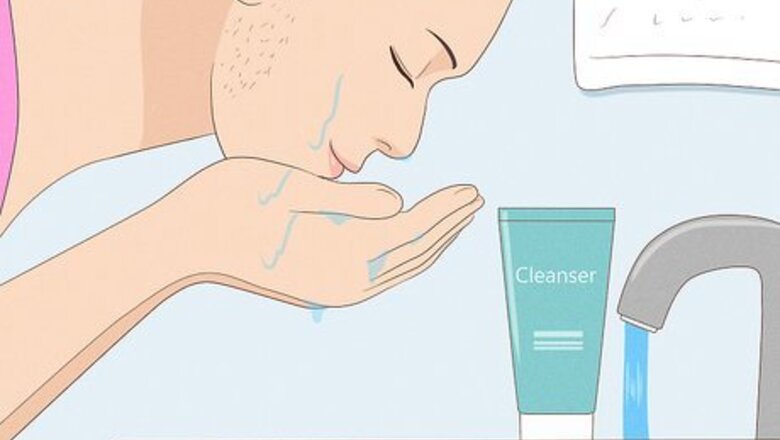
views
X
Trustworthy Source
Mayo Clinic
Educational website from one of the world's leading hospitals
Go to source
In this article, we’ll tell you everything you need to know about shaving your face, including what to use and how to avoid irritation. For baby smooth skin, read on!
- Use a single-blade disposable razor for best results. Wash and dry your face before shaving so your skin is clean and free of oil and grime.
- Apply shaving gel to your face, and use 1 hand to pull your skin taut. Use short, even strokes in the direction your hair grows to shave.
- When you’re done, rinse your face with warm water and pat it dry. Apply a moisturizer to hydrate your skin and prevent irritation.
Wash and dry your face.
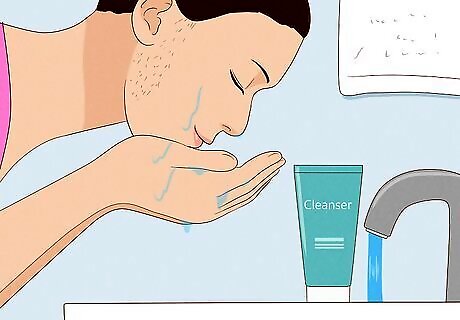
Clean your skin for a smooth, long-lasting shave. Wet your hands and face with warm water and apply a coin-sized amount of cleanser to your face. Massage the product in gently with your fingers. Then, rinse your face with water or use a damp washcloth to wipe away any residue. It’s best to start with a fresh, clean face so that the blade glides smoothly over your skin. Plus, washing your face before shaving helps prevent breakouts, especially if your skin is prone to acne. A cleanser will slightly dry out and tighten your skin, making the roots of your hair easier to reach.
Use a single-blade disposable face razor.
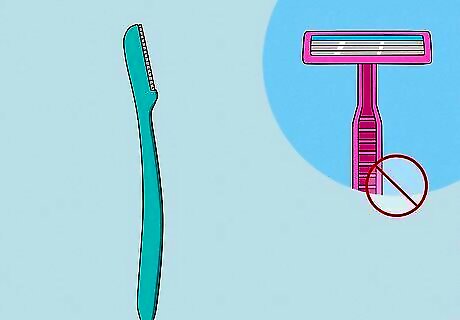
Single-blade straight razors are made to shave off peach fuzz. When it comes to shaving your face, don’t reach for the same razor you use on your legs or underarms. Instead, get a face razor (also sometimes called an eyebrow razor) for a close, clean shave. These razors are made to shave your face, so they’re less irritating for your skin. You can typically find these in multi-packs for under $5. Always use a new razor when shaving your face. Using a dull razor can cause irritation and make your skin break out. If you have sensitive skin, consider using an electric face razor instead. It won’t give you as close of a shave, but it will irritate your skin less.
Apply shaving gel to your face.
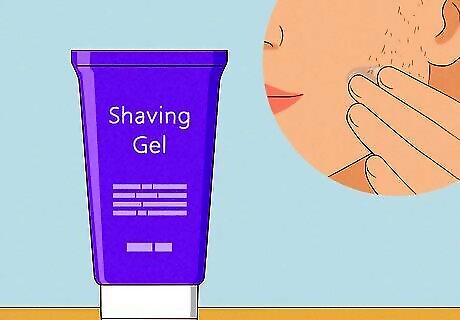
Use a shaving gel to help the razor glide over your skin. While it’s possible to shave your face dry, shaving gel helps reduce irritation and prevent nicks. Lather a quarter-sized amount of shaving gel between your palms, then smooth the gel onto your face before shaving. Using shaving gel also helps prevent breakouts after you shave. Dry shaving can irritate your skin, leading to pimples and acne. To hydrate your skin and shave at the same time, apply a natural oil, like almond oil, instead.
Pull your skin taut with 1 hand.
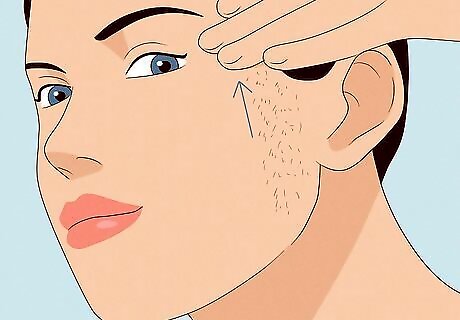
Pulling your skin taut helps the razor glide over it smoothly. The goal is to create a smooth base, preventing razor nicks and making the roots of the hairs easy to access. Press your fingers gently but firmly into your skin to pull it flat across your bone structure. Direct your skin up and towards the outside of your face, rather than down or toward the center. If you’re shaving along your upper lip, for instance, you can press your upper lip against or around your teeth to stretch and smooth out that part of skin. Or, if you’re shaving your sideburns, place your fingers just above the area you’ll be shaving and pull that part of skin up and back in the direction of your ear.
Hold the blade at a 45-degree angle.
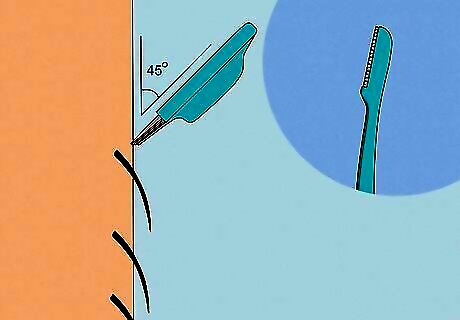
Keep the razor angled to avoid cutting your skin. Hold the razor in your other hand, and angle it slightly so it’s not flat against your face. Shave with the direction that your hair grows, which is usually down toward your chin. This will help avoid irritation or ingrown hairs later on. For spots with especially coarse hairs, like your upper lip, you can switch to shaving against the grain for a closer shave. Just keep in mind that it may put you at risk for ingrown hairs.
Shave in short, downward strokes.
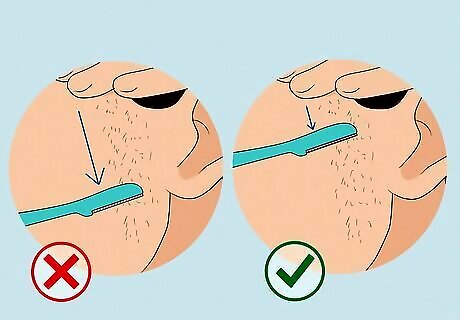
Work in small sections and press gently on your skin. Keeping your skin pulled taut and the razor at a 45-degree angle, work in a series of short, gentle strokes to cut the hairs away. Pass over each spot just a few times to get all of the hairs. Avoid going over one spot more than 3 or 4 times as you might irritate your skin. These light, short strokes are different from the long, continuous strokes that you might use to shave your legs, so it may take some getting used to. Practice makes perfect!
Wipe your razor every couple of strokes.
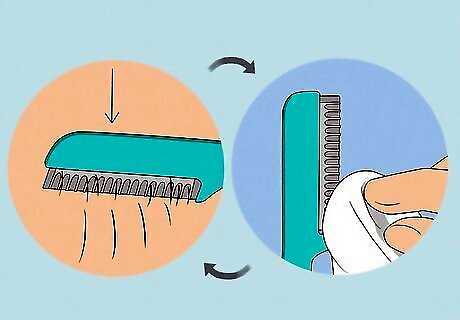
Wipe off hair to make sure your razor is clean. A clogged razor makes for a duller shave. After every couple of strokes, wipe your razor off on a clean towel or rag. That way, your razor stays sharp the entire time you’re shaving. You can also rinse your razor with running water.
Rinse your face off when you’re done.

Splash your face with warm water to remove any loose hairs. You can follow up with a damp washcloth to gently wipe away any leftover shaving gel or oil as well. Gently massage your skin, but be careful not to harshly rub or irritate it. A side effect of shaving is that dead skin will sometimes come up along with the hairs. This can leave your skin looking and feeling soft and renewed, but it will also be tender and prone to irritation.
Moisturize your skin after shaving.
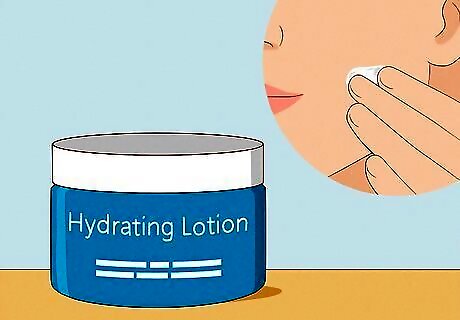
Hydrate your skin to avoid dryness and irritation. Shaving your face can sometimes make your skin feel a bit dry or tight. Combat this by massaging a hydrating lotion into your skin right after you shave to soothe and rehydrate your face. If you use any face products that contain acid or retinol, skip those for now. Acids and retinoids can cause irritation to freshly shaved skin. Planning to go outside? Use an SPF 30 or above sunscreen to protect your skin. Shaved skin is a little more sensitive to the sun, meaning it could get burned easier.
Soothe nicks or irritation with witch hazel.

Witch hazel naturally cools and soothes the skin. It’s optional, but if your skin is burning, itching, or has a cut, pour some witch hazel extract onto a cotton pad and lightly rub it onto your skin. Let the witch hazel dry for a few minutes to feel instant relief. You can also apply aloe vera to your skin to help with razor burn.

















Comments
0 comment